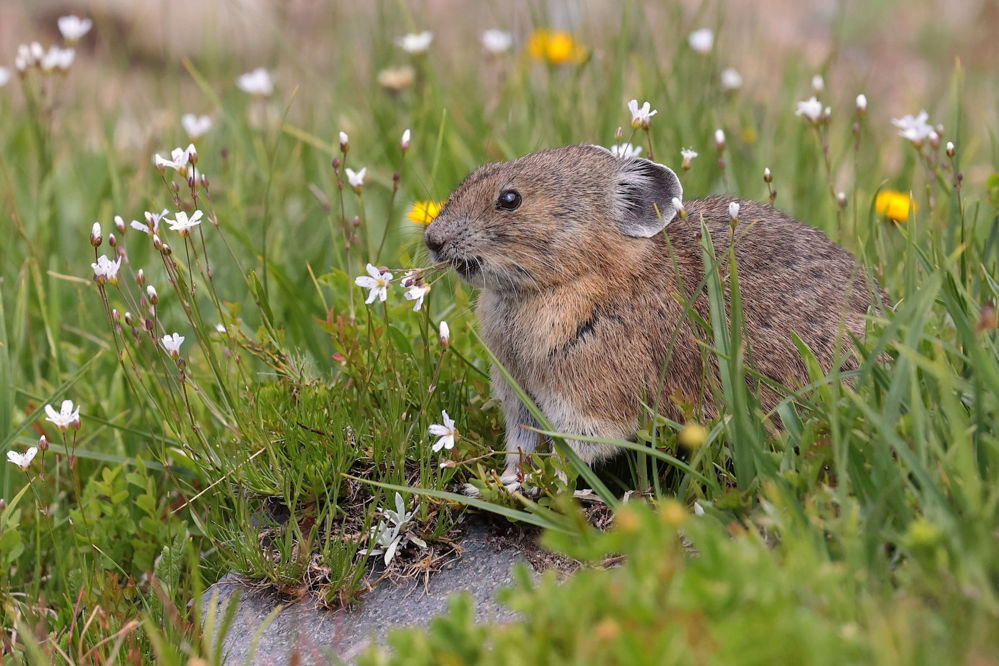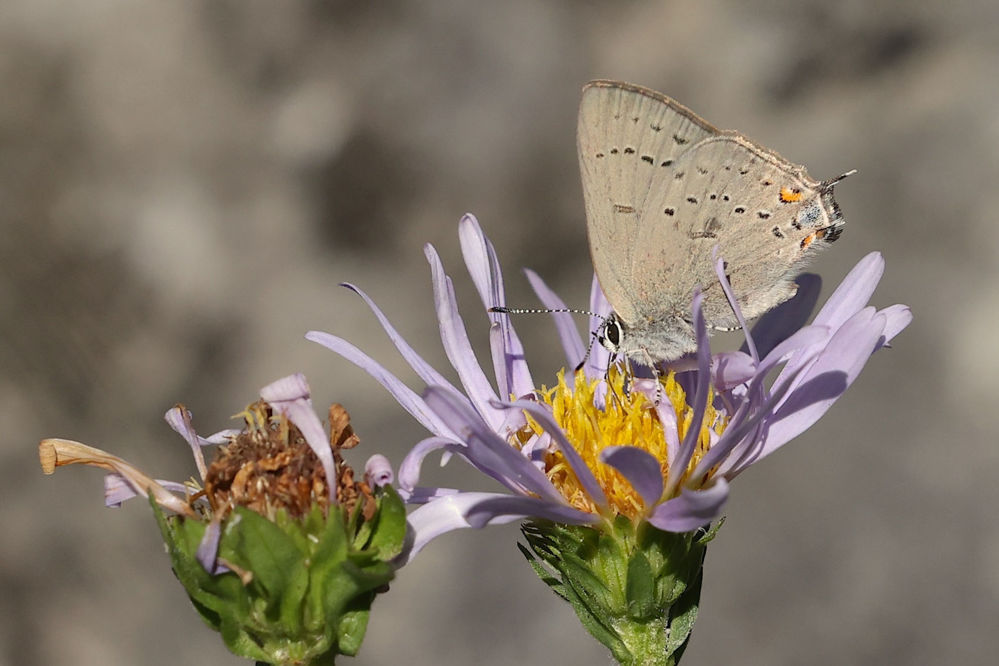Departure Date: July 23 - August 3, 2025
Compiled By: Michael O'Brien
Trip Leaders: Michael O'Brien, Louise Zemaitis
Toll Free: 800.328.8368
Phone: 512.328.5221
Camp Cascades 7/23/2025-8/3/2025

After several years of above average temperatures in the Cascades, it was a pleasure to run this camp under cooler conditions, only once or twice breaking 80 degrees, and dropping into the low 40s when we began our hike at Sunrise. Indeed, 2025 offered up some of that perfect weather that this region is famous for, and our group of intrepid and inquisitive campers took to the trails and soaked up the magic of this wonderful place.
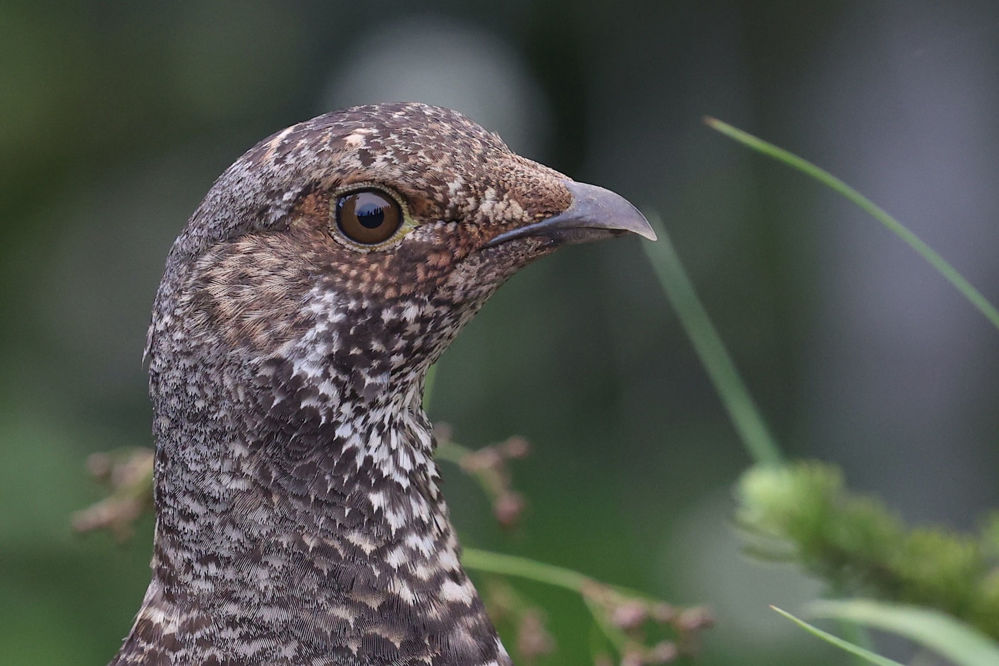
Sooty Grouse © Michael O'Brien
We began this year’s camp by heading straight up to the Cascades, making our first stop at Lake Tipsoo. At this alpine lake near the edge of treeline, we were met with a carpet of spectacular wildflowers, including Arctic Lupine, Mountain Paintbrush, Pink Mountainheath, American Bistort Subalpine Fleabane, and much more. As we would find throughout our time in the Cascades, these mountain meadows were magnets for family groups of birds, including lowland species that departed more parched habitats for better feeding opportunities up high. Some highlights included Hermit Thrush, Red Crossbill (type 4/Douglas-fir), Pine Siskin, Dark-eyed Junco, many Yellow-rumped Warblers, and a few Orange-crowned and Townsend’s warblers. On the lake, we found a pair of Spotted Sandpipers and a female Barrow’s Goldeneye.
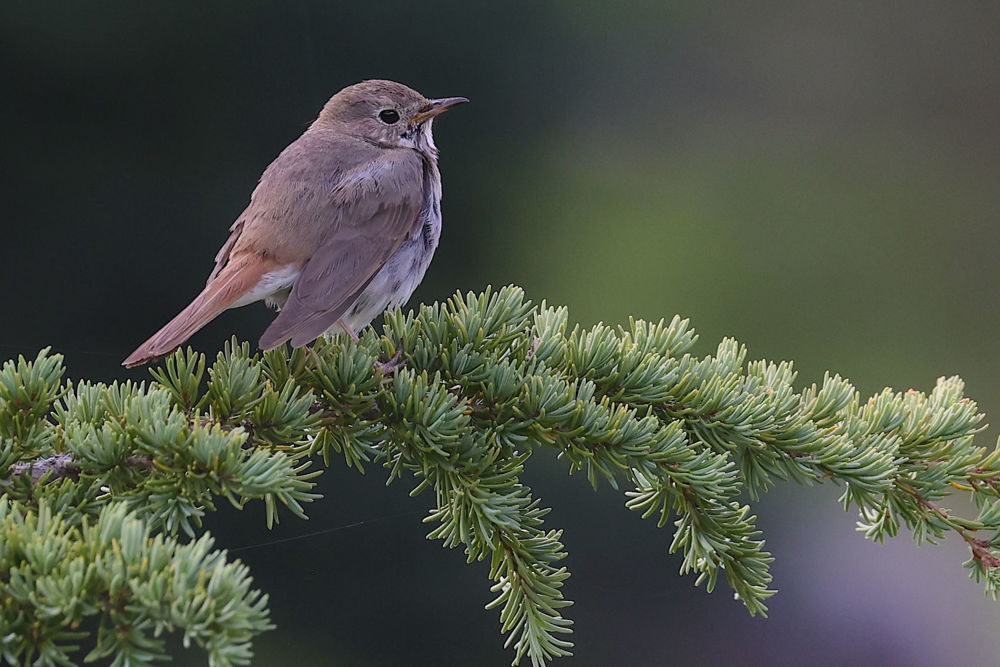
Hermit Thrush © Michael O'Brien
Our home base while in the Cascades was The Lodge at Shawnee Trail in Packwood. This little house in the woods met our needs perfectly and even had a volleyball net and basketball court, which campers made liberal use of during downtime. Though we didn’t amass a big “yard list,” we did enjoy seeing Common Nighthawks flying over every evening, and even saw Black Swift on two occasions during regular afternoon movements of Violet-green Swallows and Vaux’s Swifts.
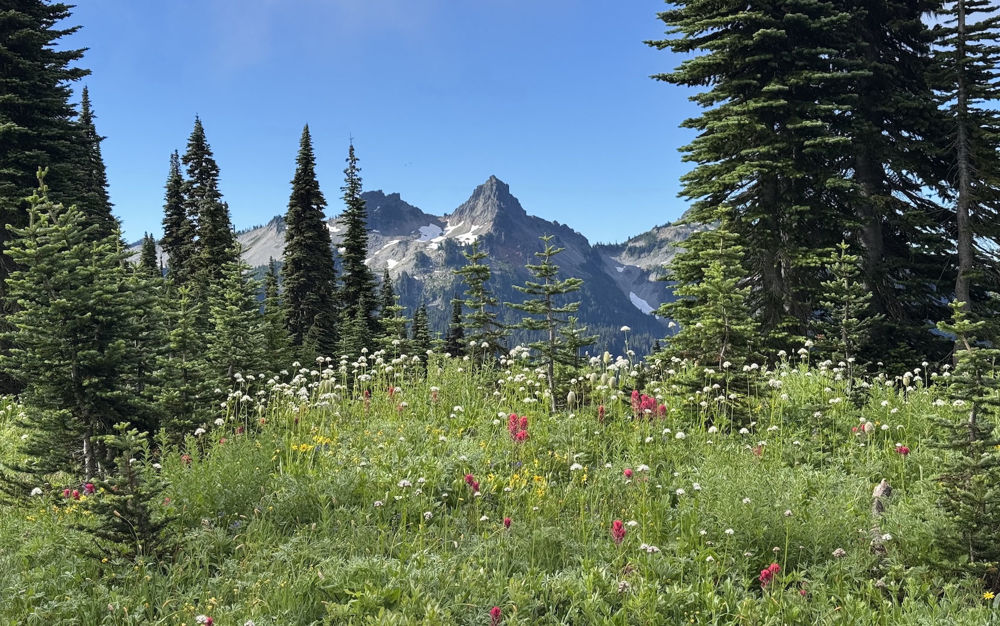
Wildflowers at Paradise © Michael O'Brien
As we toured around the Cascades, we made many stops to explore the varied habitats. A visit to picturesque Narada Falls allowed us excellent views of a foraging adult and juvenile American Dippers, plus the uncommon sight of a Sylvan Hairstreak feeding at the edge of the parking lot. A short hike at Longmire gave us our first views of Band-tailed Pigeon and Red-breasted Sapsucker as we marveled at the magnificent old-growth forest of Douglas Fir, Western Redcedar, and Mountain Hemlock. In this dark, shady environment, where trees towered up to 200 feet overhead, we also developed a good appreciation for the varied high-pitched calls of Brown Creeper, Golden-crowned Kinglet, and Chestnut-backed Chickadee. Our first Pikas at Louise Lake held us captivated for quite a while, as did numerous dragonflies cruising along the lakeshore. And a visit to Clear Lake allowed nice studies of Barrow’s Goldeneye, among other waterfowl species.
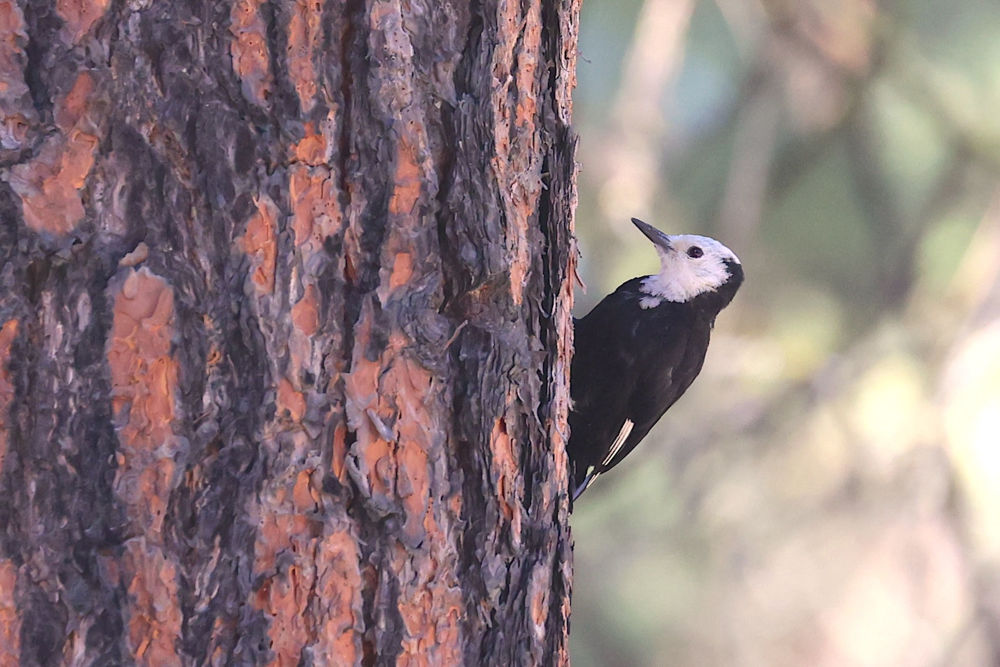
White-headed Woodpecker © Michael O'Brien
We spent parts of two days on the east side of the Cascades, where the “rain shadow” effect results in much drier habitats and a very different mix of birds. At Oak Creek Wildlife Area, the rugged rocky landscape looked like the Southwest, and was home to the likes of White-throated Swift, Golden Eagle, Prairie Falcon, Ash-throated Flycatcher, Western Kingbird, Rock and Canyon wrens, Lark Sparrow, Bullock’s Oriole, and Lazuli Bunting. All that, plus more than a dozen Lewis’s Woodpeckers—always a highlight here! Nearby Ponderosa Pine forest at Wenatchee National Forest helped add to our list, with sightings of White-headed Woodpecker, Williamson’s Sapsucker, both Dusky and Hammond’s flycatchers, and Red Crossbill (type 2/Ponderosa Pine). This arid region also held a number of interesting butterflies including Becker’s White, Coronis Fritillary, Small and Common wood-nymphs, and Woodland Skipper.
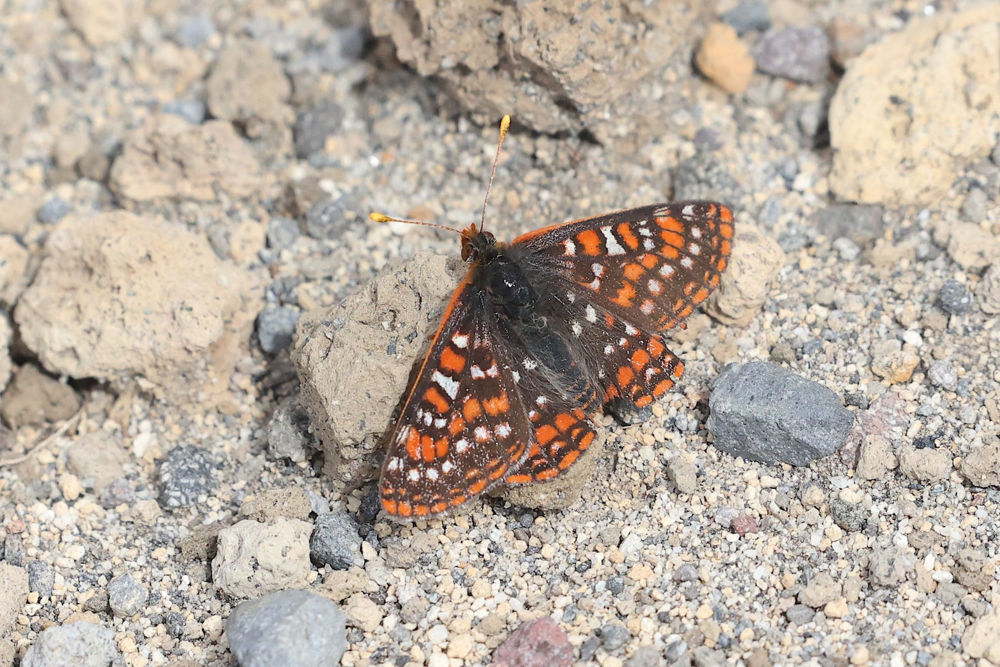
Snowberry Checkerspot © Michael O'Brien
But the "best" of Mt. Rainier was at high elevation, where mountain meadows were full of life. Wildflowers in these meadows were spectacular, and we enjoyed such species as Dwarf Lupine, Cascade Aster, Giant Red Paintbrush, Mountain Bluebells, Small Flower Beardtongue, Avalanche Lily, and much more. Butterflies were much more numerous here than elsewhere, and we found the biennial Clodius Parnassian plus Silvery and Arctic blues, Snowberry and Edith’s checkerspots, Milbert’s Tortoiseshell, and Mormon, Hydaspe, and Pacific fritillaries. The Hoary Marmots looked as happy as could be, munching on lupines and lounging on snowfields, and American Pikas nervously appeared on sun-bathed rock piles, making their “EEP” alarm calls when danger was near. Small flocks of songbirds gravitated toward these lush meadows to reap their bounty, and we found a number of interesting species including Clark’s Nutcracker; Varied Thrush; Mountain Bluebird; Fox Sparrow; Orange-crowned, Nashville, and Townsend’s warblers; Western Tanager; and Cassin’s and Purple finches. Much of this habitat was explored on two long and glorious hikes above treeline at Paradise and Sunrise. Though birds were few after we got above treeline, the scenery was beyond spectacular, and we enjoyed exciting encounters with numerous American Pipits, Horned Lark, a flyby Gray-crowned Rosy-Finch, and some of our best wildflowers and butterflies. And the real icing on the cake was two close encounters with Sooty Grouse: a male in full display followed by a female with chicks, all of them practically at arm’s reach! A shorter hike around Leech Lake at White Pass was also full of life, including countless family groups of songbirds, an amazing show of swallows and swifts, Canada Jay, Williamson’s and Red-naped sapsuckers, and a surprise Yellow-headed Blackbird flying over.
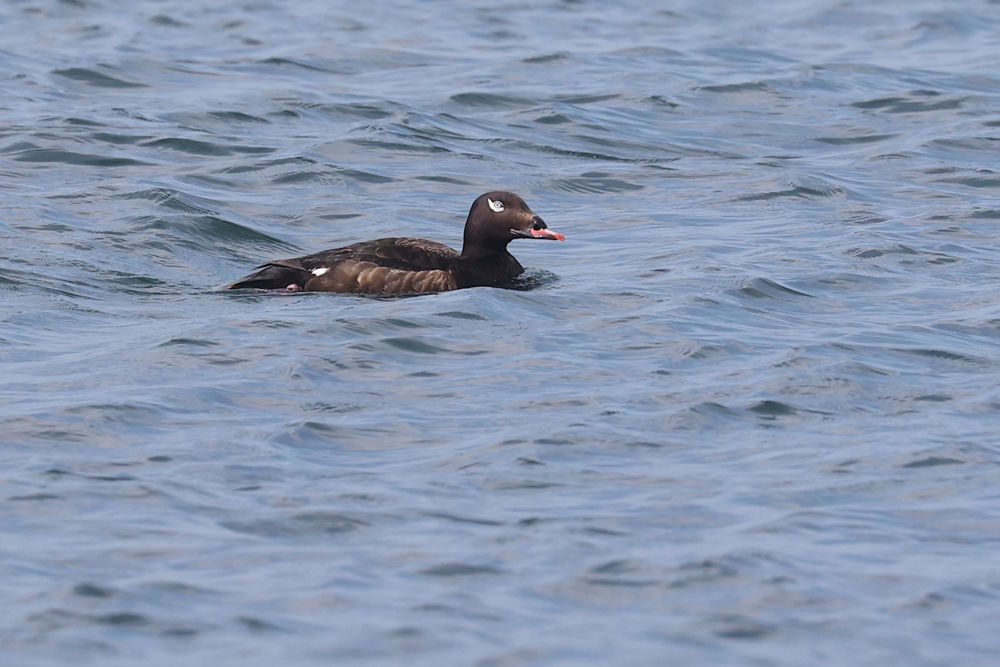
White-winged Scoter © Michael O'Brien
The next phase of our camp was spent exploring the Puget Sound region, based at YMCA Camp Casey on Whidbey Island. With views of Crockett Lake to the east, the Salish Sea to the west, and Fort Casey State Park just down street, we saw more than 50 species of birds right from our doorstep. Our first walk was to the bluffs off Fort Casey, providing an excellent introduction to the coastal birds of this region. Among the kelp beds, we found multiple Pelagic Cormorants, Pigeon Guillemots, and Rhinoceros Auklets, as well as the beautiful Heermann’s Gull, a post-breeding immigrant to this region from nesting grounds in Mexico. We were sad to see a dead Gray Whale washed up on the beach, but then pleasantly surprised when we got back to the house and found a Great Horned Owl perched in the open! A walk at Fort Casey State Park the next day allowed up-close views of hundreds of gulls on the beach, plus Surf and White-winged scoters, Marbled Murrelet, Common Murre, Red-necked Grebe, Harbor Porpoise, and much more just offshore. In the wooded portions of the park, we enjoyed sightings of Merlin (the “Black” Pacific Northwest form), Olive-sided Flycatcher, Chestnut-backed Chickadee, Bushtit, Pacific Wren, and much more. Crocket Lake allowed excellent studies of various shorebirds and swallows, and the adjacent Keystone Ferry Terminal allowed up-close views of nesting Pigeon Guillemots and Pelagic Cormorants.
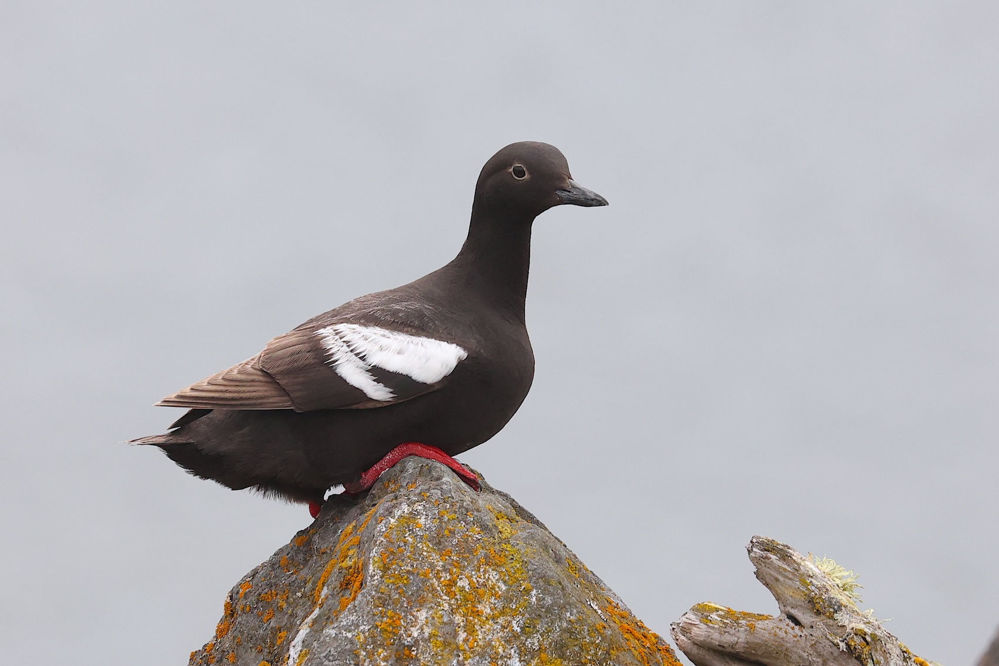
Pigeon Guillemot © Michael O'Brien
Farther afield, our explorations of Whidbey Island included several coastal viewpoints where Black Oystercatcher, Black Turnstone, and Common and Pacific loons were highlights, as were the tide pools at Rosario Beach. A wonderful walk through some magnificent mature forest at South Whidbey State Park was fun for botany and yielded a few nice birds including Hutton’s Vireo, Swainson’s Thrush (“russet-backed’ form), more Red Crossbills (type 3/Sitka Spruce), and an abundance of the very large, dark, Pacific Northwest form of Song Sparrow. For those of us from the East or Interior West, it was striking to see how many of our “familiar” birds such as Hairy Woodpecker, Black-capped Chickadee, and Song Sparrow looked darker than those at home, adaptations for living in a dark Pacific Northwest climate.
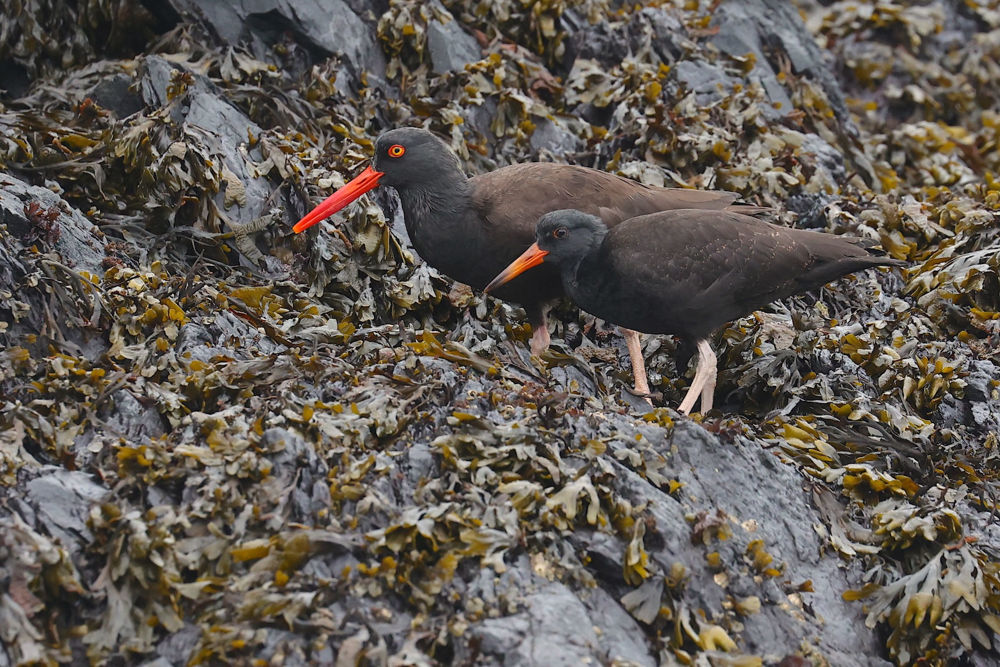
Adult and juvenile Black Oystercatchers © Michael O'Brien
An action-packed day trip to the Olympic Peninsula started with eight species of waterfowl plus Virginia Rail and Marsh Wren at Kah Tai Lagoon. At Dungeness Bay, we found eleven species of shorebirds and had excellent studies of both Long-billed and Short-billed dowitchers, three "peeps," and two Pacific Golden-Plovers among dozens of Black-bellies. And at the westernmost point of our camp, Ediz Hook, we had fun studying gulls, including several “Olympic Gulls” (Glaucous-winged x Western gull hybrids), plus Short-billed Gull, Red-necked Grebe, Harlequin Duck, and many Harbor Seals.
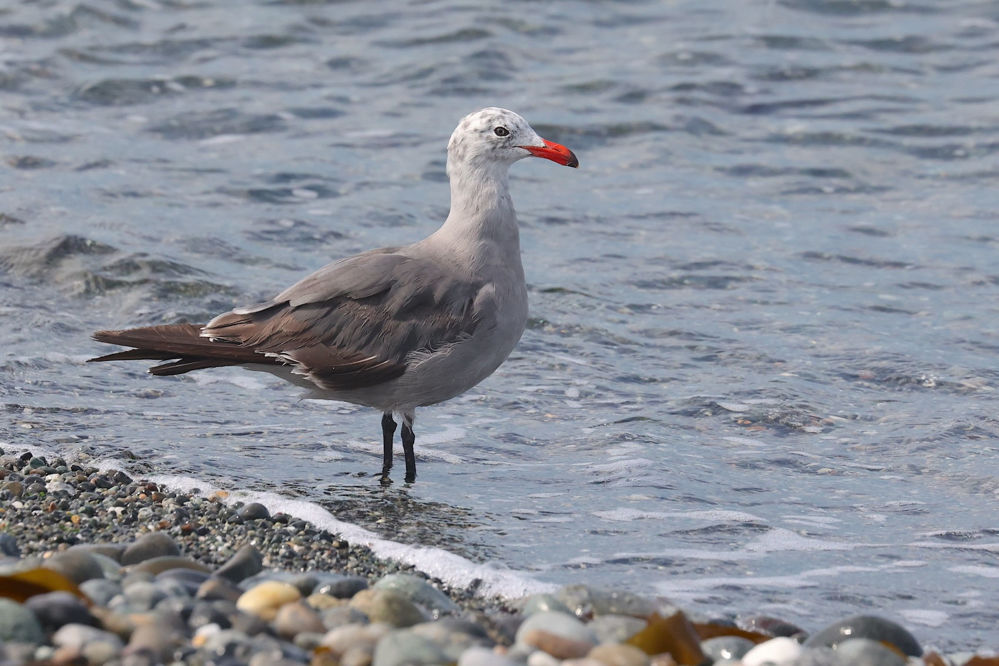
Heermann's Gull © Michael O'Brien
As always, we wish to thank Black Swamp Bird Observatory for their continued support in co-sponsoring this camp.
A complete list of birds recorded on our trip can be found at: https://ebird.org/tripreport/401736
Read the description for the next departure of this tour.
View Michael O'Brien's upcoming tour schedule.
View Louise Zemaitis's upcoming tour schedule.
ITINERARY:
July 23 – Midday arrivals in Seattle; Lake Tipsoo; night at The Lodge at Shawnee Trail.
July 24 – Narada Falls; Longmire; Skate Creek Road; night at The Lodge at Shawnee Trail.
July 25 – Stevens Canyon; Paradise to Glacier Vista on Skyline Trail; Louise Lake; night at The Lodge at Shawnee Trail.
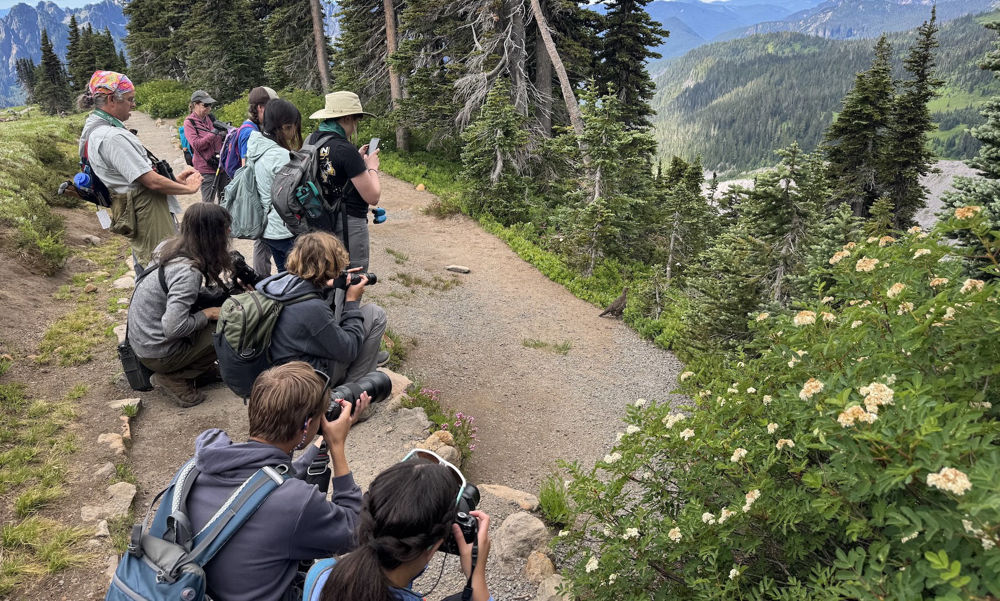
Campers watching Sooty Grouse © Michael O'Brien
July 26 – Oak Creek Wildlife Area; Wild Rose Day Use Area; Bethel Ridge Road area (Wenatchee National Forest); night at The Lodge at Shawnee Trail.
July 27 – Sunrise hike on Wonderland Trail to past Frozen Lake; Packwood; night at The Lodge at Shawnee Trail.
July 28 – Bethel Ridge Road area (Wenatche National Forest); Hause Creek Campground; Clear Lake; Leech Lake (White Pass); night at The Lodge at Shawnee Trail.
July 29 – Leech Lake (White Pass); Mukilteo-Clinton Ferrty; night at Camp Casey Conference Center (Alumni House).
July 30 – Fort Casey State Park; Crockett Lake; night at Camp Casey Conference Center (Alumni House).
July 31 – Full day on Olympic Peninsula: Keystone-Port Townsend Ferry; Kah Tai Lagoon; Wild birds Unlimited (Gardiner); Dungeness Fish Hatchery; Railroad Bridge Park; Dungeness Bay (Dungeness Landing Park and Three Crabs); Ediz Hook (Port Angeles); night at Camp Casey Conference Center (Alumni House).
August 1 – South Whidbey State Park; Camp Casey Cottages; Penn Cove; Libbey Beach Park; Bos Lake; night at Camp Casey Cottages.
August 2 – Crockett Lake; Rosario Beach; Skagit Wildlife Area; night at Red Roof Inn–SeaTac.
August 3 – Departures.
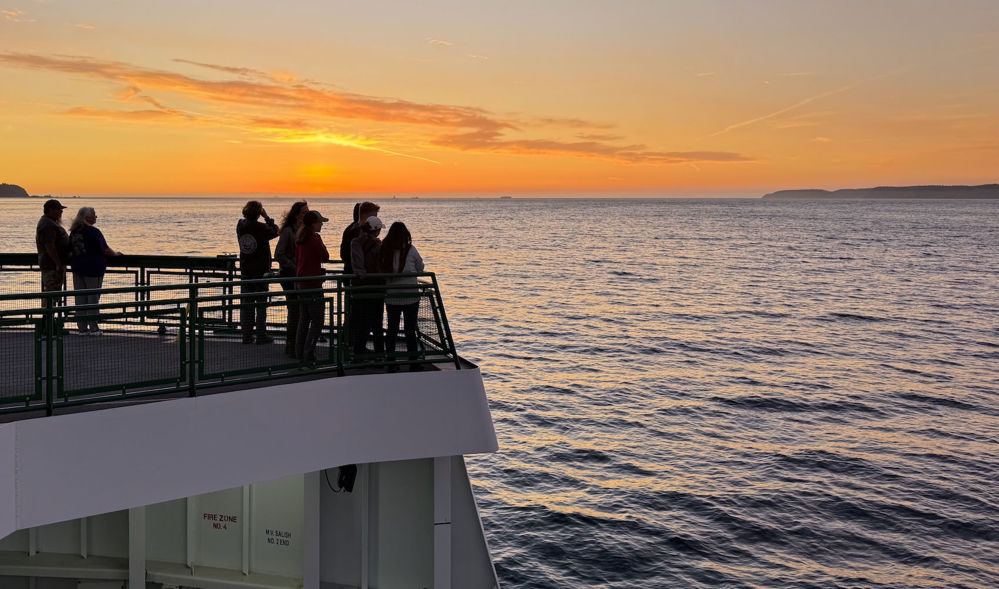
Campers on the Port Townsend-Keystone Ferry © Michael O'Brien

